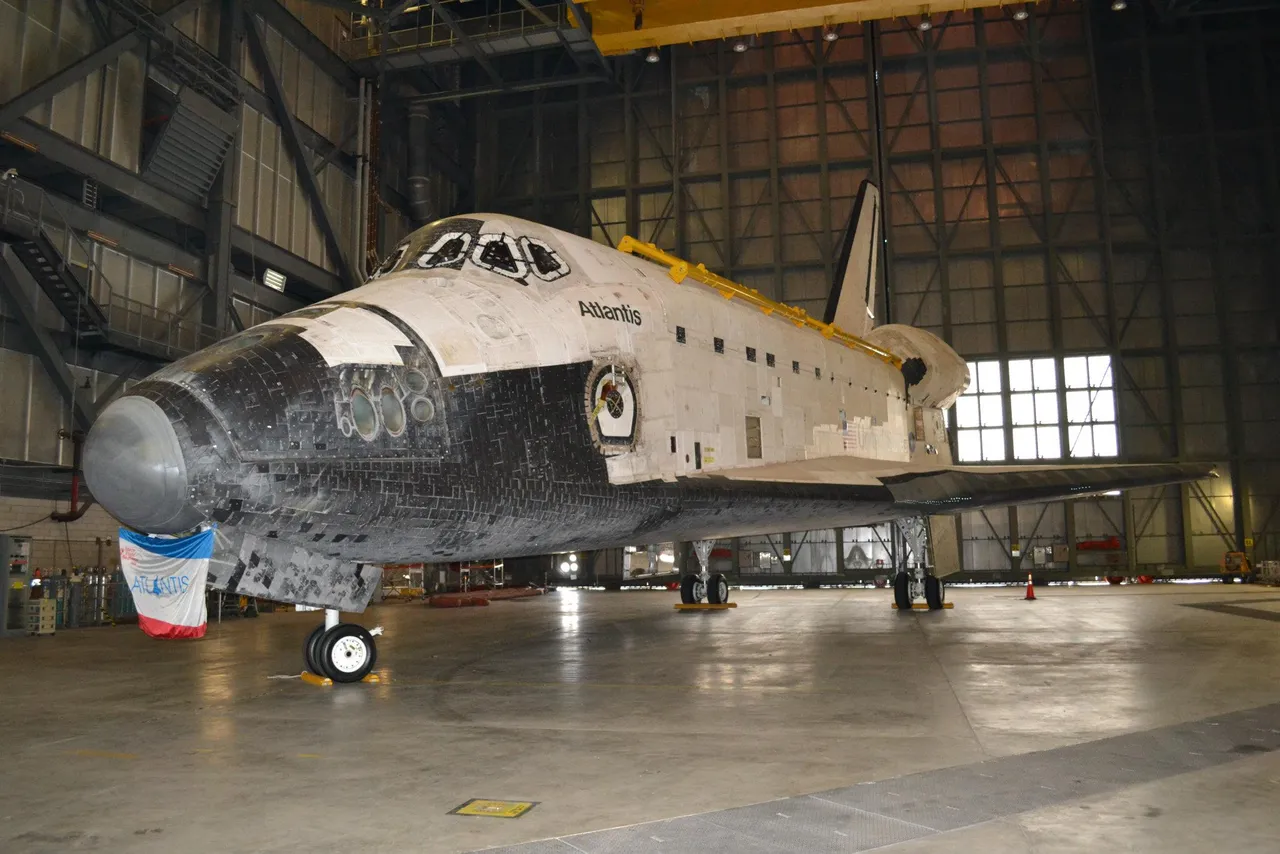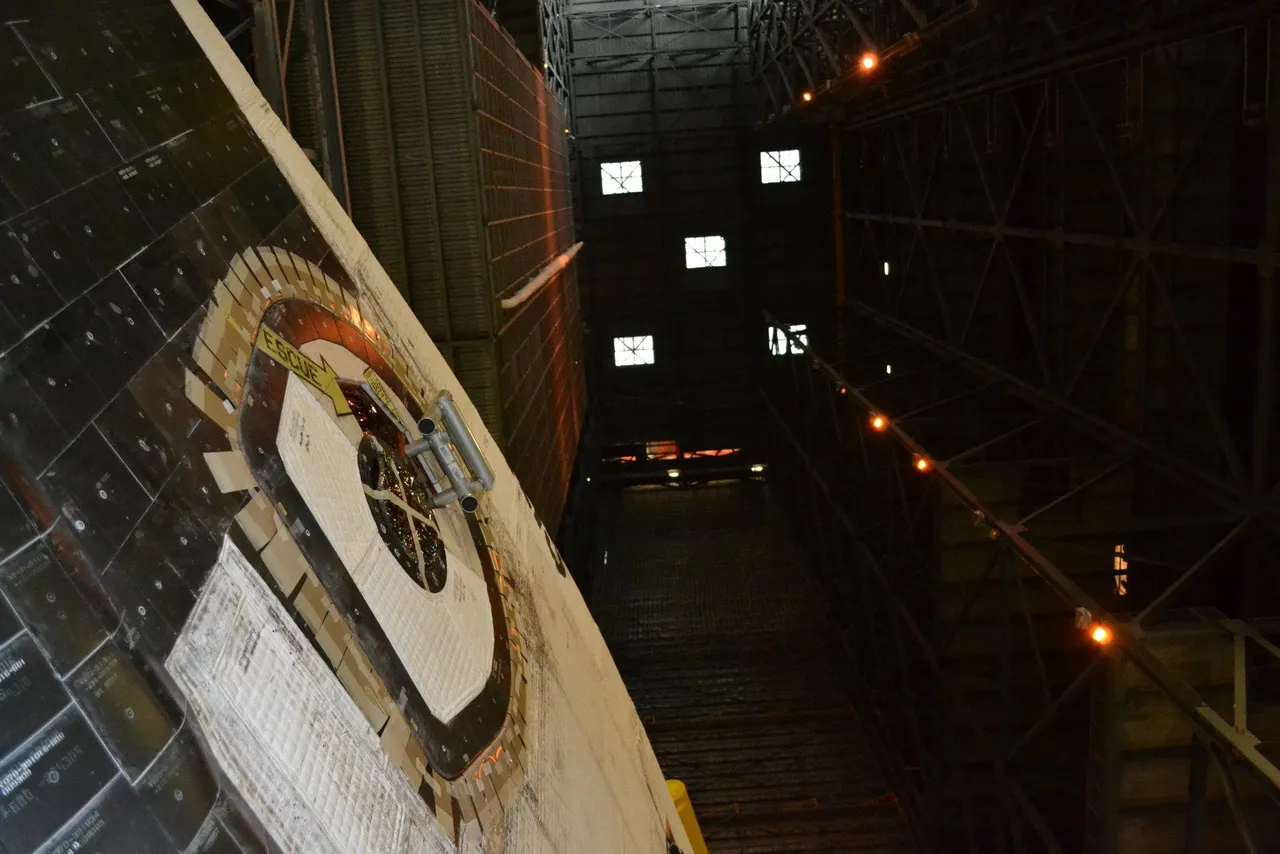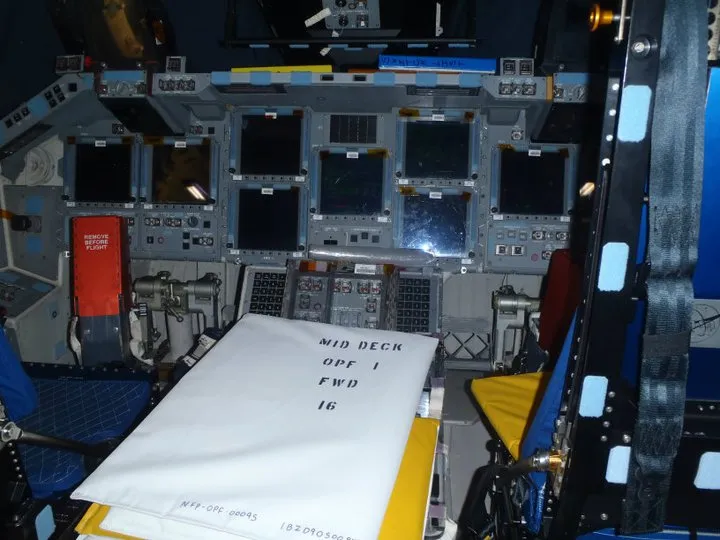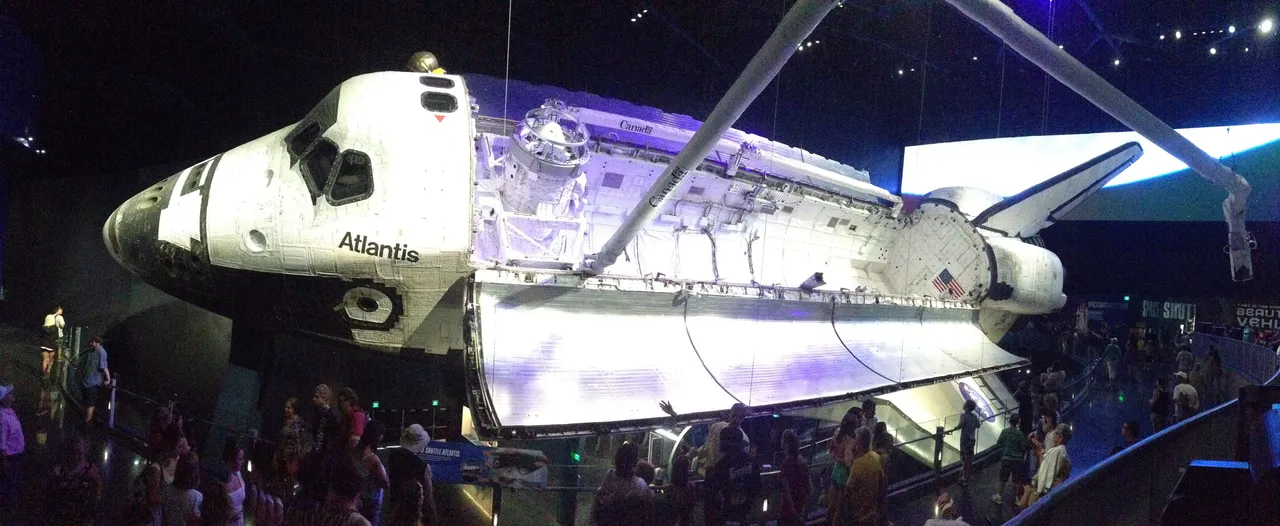In my last post, I wrote about the day I watched a rocket launch at NASA Kennedy Space Center. As it happened, this was also the day that Space Shuttle Atlantis, the final Shuttle in the Shuttle-program, was moved out of Kennedy Space Center and sent to the Visitor’s Complex to feature in their space museum. In other words, it was the last chance to see any of the Shuttles outside an American museum.

Me standing behind Space Shuttle Atlantis as it is moved out of Kennedy Space Center for the last time
The two last Space Shuttles to fly, Endeavour (May 2011) and Atlantis (June 2011), were both been kept inside the Vehicle Assembly Building (VAB) at Kennedy when we arrived. Here they were being prepared one last time before being sent to different museums, allowing us to have a final close-up look inside and outside.

Space Shuttle Atlantis inside the VAB, the fifth largest building in the world by volume

A view from the Shuttle door and up towards the ceiling.
The VAB is not like any other building you’ve seen. Despite the building being 160 meters tall, it has no floors and is instead only one giant room. Indeed, it is so huge that clouds have sometimes formed indoors underneath the ceiling, resulting in rain pouring down on the spacecraft and employees. While standing inside I could not help but feel small. I can only imagine what it would be like when the 110-meter-tall Saturn V rocket was standing inside, whilst engineers were working at different levels of the rocket.

A little sneak-peek of the cockpit inside Space Shuttle Endeavour
As awesome of a day that it was for me, it was very special for the seniors working at Kennedy Space Center. For decades, the Shuttle program had been occupying most of their time and energy. With the first test launches in 1981, the Shuttle program had then lasted for 30 years until its cancellation in November 2011. You can imagine how many Kennedy-employees had worked on hardly anything else for most of their adult careers, making it very special to watch it come to an end. Following the cancellation of the Shuttle-program, Kennedy was forced to lay off a high number of engineers and the United States was then, for the first time since the Apollo era, left without the ability to send astronauts to orbit using American launch vehicles. In other words, it was a significant day for American space history.

Space Shuttle Atlantis as it's being tugged away
Later on, the Space Shuttle Endeavour was then flown away on top of an airplane. I remember watching the video, which is quite a unique thing to witness when you know that the Shuttle weighs around 75 000kg (165 000 pounds). I remember first thinking “there goes a piece of space-history”, before joking to my friends later on that I now call BS on airlines charging over-weight fees for heavy luggage. If it can carry the Shuttle, then it can carry my extra clothes too!

Space Shuttle Endeavour on top of a modified Boeing 747-100
Today, the Shuttles are scattered across the United States. For those of you interested in seeing them, you can find Shuttle Atlantis at the Kennedy Space Center Visitor Complex in Florida, Shuttle Discovery at the Steven F. Udvar-Hazy Center in Virginia, Shuttle Endeavour at California Science Center, and Shuttle Enterprise at the Intrepid Sea, Air & Space Museum in New York. Below you can see Space Shuttle Atlantis, the one from most of my pictures, displayed at the Visitor's Complex.

Space Shuttle Atlantis at the Kennedy Space Center Visitor's Complex.
source
Needless to say, it was an extraordinary day. First witnessing a rocket launch from a VIP terrace at the Space Center, and then getting to see the Shuttles up close on such a historic day. Tomorrow I will take you inside the NASA Kennedy Space Center’s mission control room, including the preserved room used during the Apollo era! So stay tuned ;)